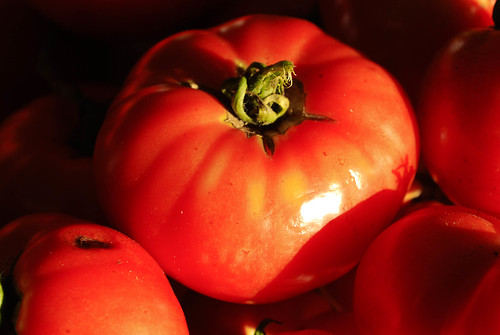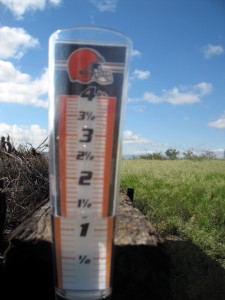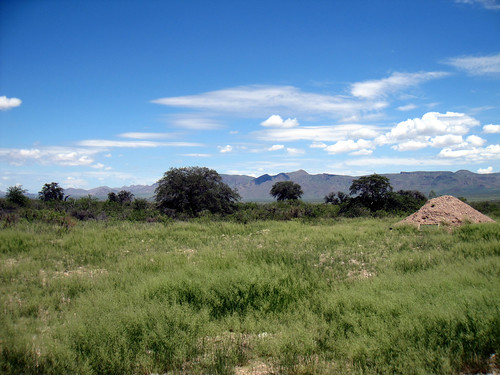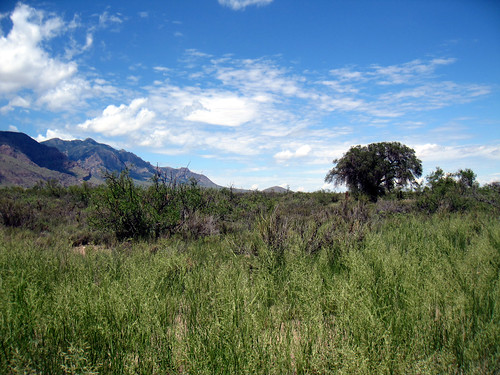OK, hopefully, we’ve all had time look around their pantries and think a little about food.
Clearly, in the culture we live in, we have many food choices. (I have a keen sense of this having lived in a country where there was much less food choice. Try explaining that in America, there really is no “staple food.”) So why do our food choices matter?
Most obviously, our food choices matter to ourselves. In particular, many of our food choices are made based on:
- Personal preference/taste
- Convenience/time
- Finances
- Health
First, we all have things we like and things we don’t like. And for the most part, as adults, we buy food we like (although that is moderated by other considerations like health and perhaps finances).
In my own thinking about food, I’ve come to realize that we sometimes confuse what looks best with what tastes best. Nowadays, food is often engineered to look good. A fair amount of genetic modification work is designed to produce food that withstands mechanical picking and very long times to market and still looks good. (Pringle, 2003)
Organic produce or small farm produce doesn’t always look as good as the colorful (often waxed and gassed) produce you see in chain supermarkets. But it tastes much better. And if you aren’t sure about this, just think about the difference between a tomato from the garden and those bright, beautiful, but tasteless tomatoes at the grocery.

Nothing tastes better than garden tomatoes (Credit: David Steltz)
Another huge personal consideration regarding food is convenience. Think about fast food. As a nation, we eat tons of it, and yet I don’t think anyone (with the possible exception of my nephews) really think it is superior food. Convenience and finances are a big part of this food choice.
Convenience is also a factor in purchase decisions we make at the grocery. Ever since TV dinners came out, we have been in love with convenient food. But think about the last ready-to-eat boxed meal you bought and popped in the oven. Granted it’s gotten better since the Swanson days, but I still don’t think it measures up as really great food.
But we are a nation on the go and so we often make food choices that don’t measure up in terms of taste or health because of convenience.
Then there is the issue of finances. Can we really afford to make better tasting/healthier/more ethical food choices? Organic food comes to mind — most consider it “better” (healthier, more ethical), but it is more expensive than regular grocery food.
It’s hard to talk about food and finances without talking about Wal-Mart. They have built an incredible empire around low prices. From a sheer marketing and business strategy standpoint, they are a case study worth studying.
But as several books I’ve been reading point out, low prices come at a cost. Food costs what it costs, so why are Wal-Mart’s prices so much lower than everyone else’s?
The answer is that while the costs are the same, Wal-Mart has been successful in passing part of their costs on to folks other than their customers. Here are a few examples of how they do this. First, Wal-Mart is notorious for squeezing their suppliers to cut their prices each and every year. How do they do this? Suppliers make compromises in their own procedures, and they squeeze others further down the channel. This results in things like lower wages and longer hours for workers (especially foreign ones), less adherence to environmental guidelines (more run-off pollution, etc.), and less attention to animal welfare (inhumane conditions, more chemicals to spur production, etc.) Essentially, this passes on costs to those who have no say in the matter — workers, communities, animals. But it does save the consumer money.
Wal-Mart is also notorious for paying their workers less than the competitors. While the numbers are hard to come by, a discrimination case in California brought out some interesting figures. One was that the average non-salaried Wal-Mart worker in California also received over $2,000 in state government assistance (food stamps, welfare, Medicare, etc.). (Singer and Mason, 2006) So in this case, Wal-Mart is passing on costs to the government. Other grocery chains were so concerned about the downward competitive pressure on pricing that would result from Wal-Mart supercenters moving into to new neighborhoods, that there was a statewide grocery strike in California in 2003-04. Some were concerned that overall movement to Wal-Mart level prices could bankrupt the state (and that was before the current economic crisis).
OK. Enough about Wal-Mart. The bottom line is that someone pays the cost of below-market pricing.
Fortunately, for the vast majority of us, we have the flexibility to choose something other than the lowest cost provider if we want to. The added cost (e.g. $.25 per egg) can be offset against the cost of one or two lattes a week, an extra week of vacation, or some other extra luxury. Most of us live in a comfortable enough situation that these are choices we can make. So we must weigh the benefit of low cost vs. other things like taste, health, and the effects on others. And choice is the whole point here.
So that brings us to the last aspect most of us probably consider in terms of the personal effects of our food choices: health.
When choosing food, we think about things like fat, calories or carbs, chemical additives, GMOs, etc. We try to read the labels. (Future article coming on that.) But it’s all pretty confusing. Organic food — which uses little or no chemicals in its production — seems like a good idea, but is it worth the cost? And do we know what “organic” really means anyway?
For now, let’s just put health on the list and hope our food choices support good health for ourselves and our families. We’ll revisit some of these issues as we proceed.
Exercise of the day: Think about the personal considerations of preference/taste, convenience/time, finances, and health in terms of the food choices you make every day. Rank them. Which is most important to you? Which usually wins out when you put food in your grocery cart? If there is a disconnect, what could change the dynamics at play?







